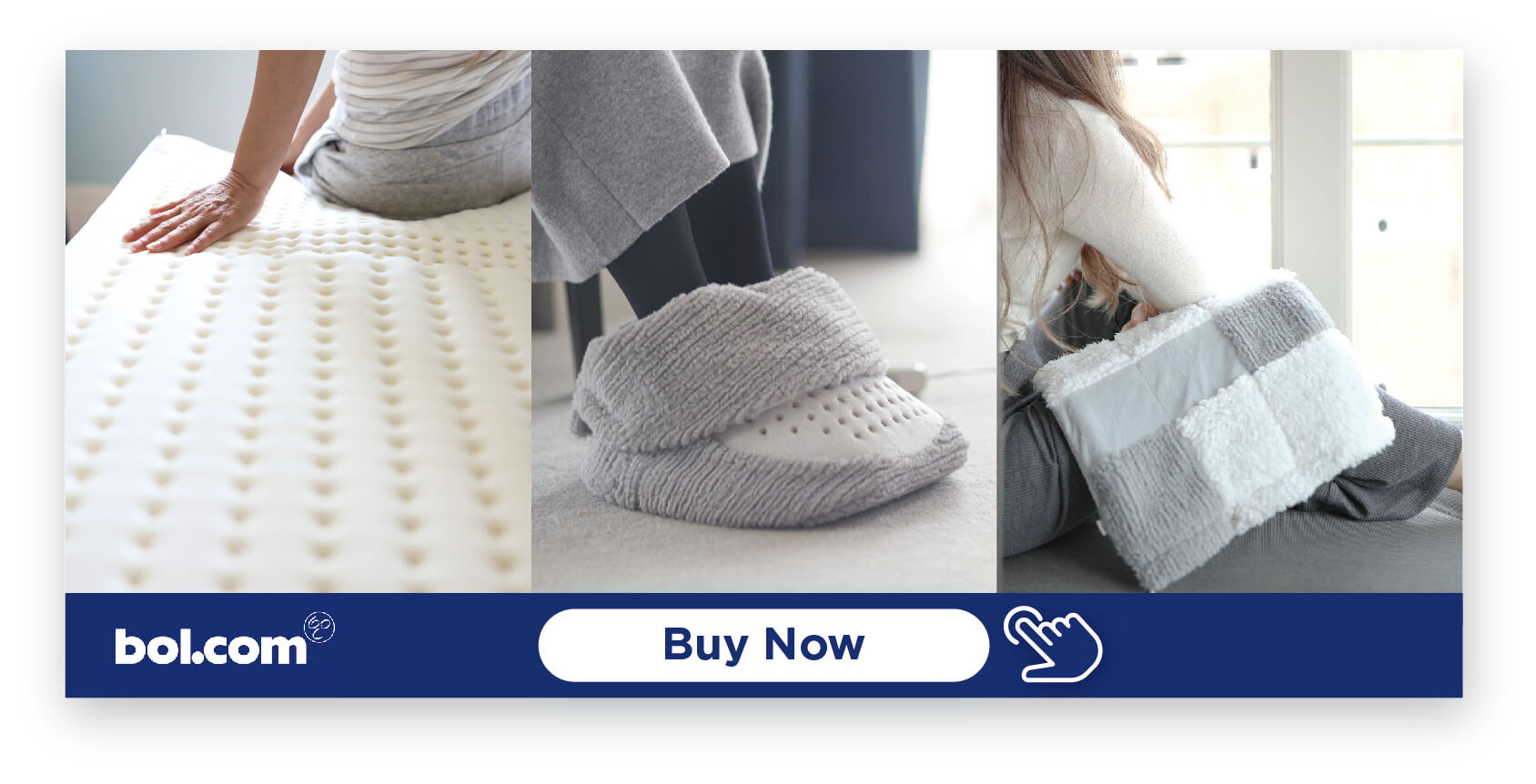
We often encounter stressful situations in our daily life, and our stress can manifest in a variety of ways. For instance, our muscles tend to tighten when we’re anxious, causing strain and muscle pain particularly in the trapezius muscles, located in the upper back.
What is the Trapezius Muscle?
The trapezius is a large muscle group found at the posterior of the neck, shoulders, and upper back, extending to the middle back. It is responsible for moving the shoulder blades, and tilting the head and neck, among other movements.
Experiencing trapezius muscle pain can be a heavy burden and has a tendency to be a stressor on top of the stress that’s causing it. Its symptoms include:
- soreness or aches
- stiff neck
- shoulder pain
- swelling
- arm weakness
You may feel a burning sensation on your upper back, shoulders and neck, with the strained area feeling tingly. As the muscle begins to swell, you may experience headaches. This can make it difficult for you to concentrate on a task or relax.
Common Causes of Trapezius Pain
Sleeping and performing any task that requires arm movement can be difficult when you have trapezius muscle pain.
While stress does contribute to trapezius muscle pain, it can also be caused by other factors including:
- bad posture
- muscle injury (e.g. a pulled muscle) or trauma
- sleeping with your head turned to one side
- performing activities that rely on the trapezius muscle, such as backpacking
This is also common for office workers who are hunched over their computers all day, or cab drivers who stay on the road for several hours. Extended phone calls where your device is wedged between your ear and shoulder is also a plausible cause. If you had to carry heavy grocery bags on the way home your trapezius muscle will be sore, especially if you’re not used to carrying that weight. Playing musical instruments, practicing weightlifting or training for contact sports for extended hours can also cause trapezius pain.
Ways to Loosen Your Trapezius Muscles and Alleviate Pain
The good news is, there are a number of ways to treat and prevent trapezius muscle pain, and they can be done within the confines of your home. Here are some tips to help you.
- Rest
Remember to rest and relax your shoulders when experiencing stress to loosen up your tight trapezius muscle.
- Ice
Apply ice to the affected area for 15 to 20 minutes every two to four hours to reduce the pain.
- Massage
Massaging tender knots or trigger points can also help ease your trapezius muscle pain. As you won’t always have massage therapists or a trusted person to count on for a massage, you need to learn how to do it gently to avoid further injuries.
Before starting, it’s important to know where your trapezius muscle is (or at least approximate where it is). As mentioned earlier, the trapezius muscle spans the bottom of our skull, our shoulders and most of our back. If you were to place your palm on top of your opposite shoulder, you will be touching the upper trapezius or upper traps.
The origin of the upper trapezius begins at the base of your skull, where your nape and shoulders meet.
When massaging your own back, we recommend focusing on one shoulder at a time. Using your palm, begin at the base of your neck and begin kneading your muscles. If you don’t know how to start, imagine as if you were kneading dough.
Your movement should be slow and rhythmic, moving towards your arm. While massaging, stay mindful of how your body reacts. If it begins to hurt, lessen the weight on your hands.
Repeat this massage two to three times on the same side, and then massage your other shoulder.
If you’re having a hard time reaching the trigger points, you can try laying down on your side. Reach your back and gently press any sore points. Use a pillow that can support your neck and keep it exactly in line with your spine to relax your trapezius muscle.
You can also use tennis balls and other tools to massage your trapezius muscle. Simply place the tennis ball between your muscle and the floor or any hard surface. Roll back and forth to control the location of the ball and to touch the trigger points.
- Exercise
You can also try stretching and exercising to ease trapezius muscle pain. Begin by doing simple exercises such as the shoulder shrug and roll or neck stretching. We do not recommend stretching in jerking or bouncing movements, as this may aggravate the pain more.
Stretch gently without forcing your body to the point of pain, and hold it for about 15 to 30 seconds. You will know that you are not stretching properly if you feel pain. When your stretches are not forced, it causes tension. Here are several poses you can try to help your trapezius muscle:
-
- Ear-to-shoulder stretch
Sit up straight in a chair or on a mat. Gently bend your head to one side, your ear drawing closer to your shoulder. If you want a deeper stretch, you can gently pull your head towards your shoulder and hold it for 20 seconds.
Once done, you can stretch your head to the other side. - Hug stretch
Imagine giving someone a bear hug. Stand up straight and reach your left shoulder with your right hand. Do the same with your left hand, your left arm over your right.
Gently press down on your left shoulder with your right hand while leaning your head to the right. Hold this pose for 20 seconds.
Once done, switch the placement of your arms and repeat on the other side. - Cat stretch
Lay a mat or towel on the floor and get into all fours, where your hands are directly underneath your shoulders and your knees underneath your hips. As you inhale, curl your spine towards the ceiling and contract your abdominal muscles. Relax your neck during this practice and let your head follow the curve of your spine.
Hold this pose for 15 seconds. Once done, exhale and slowly relax your back into a neutral position.
- Ear-to-shoulder stretch
- Medication
Like other types of pain, there is medicine available to reduce trapezius muscle pain and swelling. This includes non-steroidal anti-inflammatory drugs such as ibuprofen and naproxen. Just remember to consult your doctor before taking any medication as there may be side effects.
- Heat treatment
Heat treatment can do wonders for any type of muscle pain. It helps boost the healing process by increasing blood flow to the affected muscle, thereby providing it with more oxygen and nutrients, which are both important for muscle recovery.
Prepare a warm bath with epsom salt, and soak your body in the tub for at least 30 minutes. Do this three times per week. Epsom salt contains magnesium, which assists in relaxing your tightened muscles.
In addition, you can also apply a heating pad to the painful area because it provides deep and penetrating relief. Just set the heat to low and keep the heating pad in place for 15 to 20 minutes.
The warmth from heating pads increases your blood flow, relaxes your muscles, and enhances flexibility. Heating pads are also handy at providing relief whether you’re at home, work, or school. Just remember to choose a high-quality heating pad to avoid skin irritation.
If you haven’t experienced trapezius muscle pain, then prevent it from ever happening. The best way to do this is by:
- reducing stress to avoid muscle tension.
- paying attention to your posture
- sitting down and standing up properly
- stretching gently to improve muscle strength
- exercising
When Do You Need to See Your Doctor?
If your trapezius pain is chronic or is worsening over time, schedule an appointment with your doctor. Pain may hinder your usual performance everyday and may prevent you from relaxing comfortably.
Once your doctor has gone through your health history and your physical exam results, you may be prescribed to get physical therapy or take regular medication.
Relax and relieve stress with Wellcare!
From heating cushions to electric heating pads, Wellcare has a variety of products that are designed for comfort and warmth not just for your trapezius muscles, but also for other parts of your body.
Wellcare products are equipped with 4D Dynamic Warmth Flow (4D DWF) technology which mimics the human body’s breathing system to provide even heat distribution throughout the surface of the product. Our electric heating products also have an automatic switch-off feature to prevent overheating and skin burns.
Our products are guaranteed safe. We manufacture them under strict guidelines and we use only the finest available and eco-friendly materials. We pay attention to every little detail, even for parts of the product that you can’t see.
What are you waiting for? Grab a Wellcare product and relax your muscles today!
We aspire for better health for our readers, liberate them from their painful episodes, and empower them to pursue their goals and aspirations, and future endeavours pain-free.


.png?width=512&name=united-kingdom%20(1).png)

